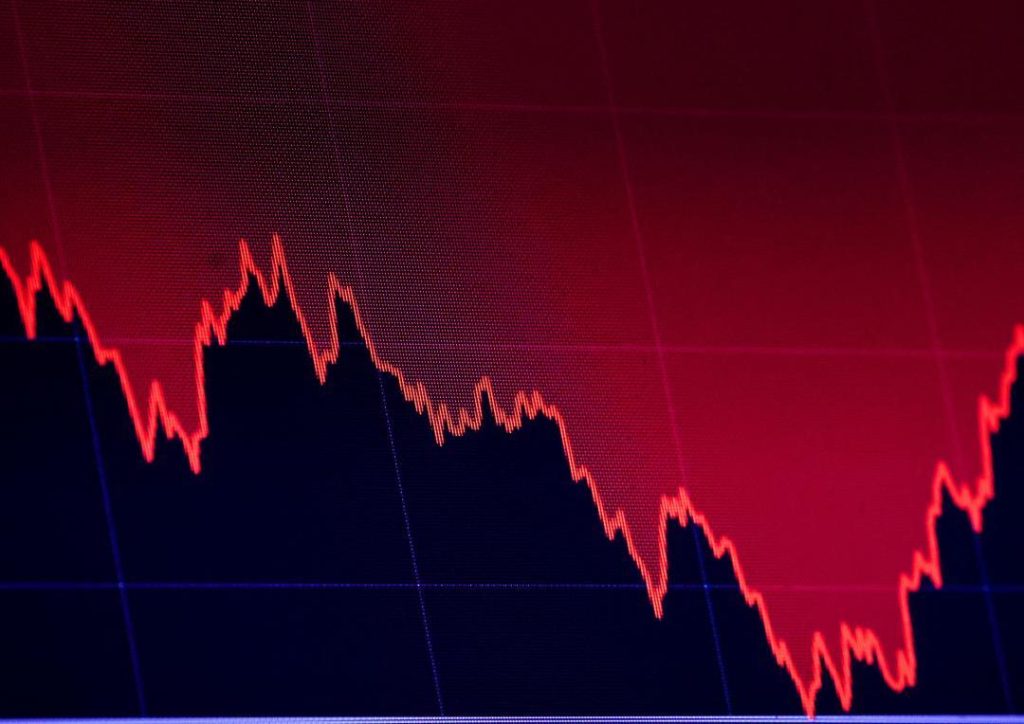
Bloodbath in US Markets, S&P 500 and Nasdaq at Over 6-Month Lows
The US stock market experienced a brutal selloff on Monday, with both the S&P 500 and Nasdaq indexes plummeting to their lowest levels in over six months. The sharp decline was fueled by worries over US President Donald Trump’s upcoming announcement of tariff plans, which has sparked concerns about a potential recession.
As of 09:44 am (US time), the S&P 500 had fallen 81.90 points, or 1.47%, to 5,499.04, while the Nasdaq had dropped 409.48 points, or 2.36%, to 16,913.52. The massive selloff was widespread, with all 11 major sectors of the S&P 500 posting declines.
The sell-off was driven by concerns that Trump’s proposed tariffs on imports could lead to a trade war, which could have far-reaching consequences for the global economy. The tariffs are expected to be announced as early as this week, and investors are growing increasingly anxious about the potential impact on corporate profits and economic growth.
The S&P 500 and Nasdaq have now fallen for three consecutive days, with the S&P 500 dropping 2.5% and the Nasdaq declining 3.5% over that period. The declines have been particularly sharp in the tech sector, with the Nasdaq-100 index of the largest Nasdaq stocks falling 4.1%.
The sharp selloff has sent shockwaves through the financial markets, with bond yields and the US dollar falling sharply. The yield on the 10-year Treasury note fell to its lowest level in over a year, while the US dollar index dropped to a 2-year low.
The bloodbath in the US markets has also had a ripple effect on global markets, with stocks in Europe and Asia also falling sharply. The FTSE 100 in London fell 1.2%, while the Nikkei 225 in Tokyo dropped 1.5%.
The sell-off has been sparked by concerns that the proposed tariffs could lead to a trade war, which could have far-reaching consequences for the global economy. The tariffs are expected to be announced as early as this week, and investors are growing increasingly anxious about the potential impact on corporate profits and economic growth.
The S&P 500 and Nasdaq have now fallen for three consecutive days, with the S&P 500 dropping 2.5% and the Nasdaq declining 3.5% over that period. The declines have been particularly sharp in the tech sector, with the Nasdaq-100 index of the largest Nasdaq stocks falling 4.1%.
The sharp selloff has sent shockwaves through the financial markets, with bond yields and the US dollar falling sharply. The yield on the 10-year Treasury note fell to its lowest level in over a year, while the US dollar index dropped to a 2-year low.
The bloodbath in the US markets has also had a ripple effect on global markets, with stocks in Europe and Asia also falling sharply. The FTSE 100 in London fell 1.2%, while the Nikkei 225 in Tokyo dropped 1.5%.
Why the Sell-Off?
So, why is the US market experiencing such a sharp sell-off? There are several reasons why investors are growing increasingly anxious about the proposed tariffs.
Firstly, there are concerns that the tariffs could lead to a trade war, which could have far-reaching consequences for the global economy. The tariffs are expected to be announced as early as this week, and investors are growing increasingly anxious about the potential impact on corporate profits and economic growth.
Secondly, there are concerns that the tariffs could lead to higher prices for consumers, which could have a negative impact on consumer spending and economic growth. The tariffs are expected to hit a range of industries, including technology, agriculture, and manufacturing, which could lead to higher costs for consumers.
Thirdly, there are concerns that the tariffs could lead to a decline in US economic growth, which could have a negative impact on corporate profits and the stock market. The tariffs are expected to increase costs for businesses, which could lead to lower profits and a decline in economic growth.
What’s Next?
So, what’s next for the US markets? There are several things that could happen over the coming days and weeks.
Firstly, investors will be watching closely for any news on the proposed tariffs and the potential impact on the global economy. If the tariffs are announced, it could lead to a further decline in the stock market as investors grow increasingly anxious about the potential impact on corporate profits and economic growth.
Secondly, investors will be watching closely for any signs of economic weakness, such as a decline in consumer spending or a rise in unemployment. If the economy shows signs of weakness, it could lead to a further decline in the stock market as investors grow increasingly anxious about the potential impact on corporate profits and economic growth.
Thirdly, investors will be watching closely for any signs of a rebound in the stock market. If the market shows signs of strength, it could lead to a reversal of the recent decline and a return to more positive territory.
Conclusion
In conclusion, the US stock market experienced a brutal selloff on Monday, with both the S&P 500 and Nasdaq indexes plummeting to their lowest levels in over six months. The sharp decline was fueled by worries over US President Donald Trump’s upcoming announcement of tariff plans, which has sparked concerns about a potential recession.
However, it’s worth noting that the sell-off has been sparked by concerns about the potential impact of the tariffs on the global economy, and not necessarily a reflection of the underlying strength of the US economy. As such, investors will be watching closely for any signs of economic weakness or a rebound in the stock market over the coming days and weeks.
Source:
https://www.reuters.com/markets/us/futures-tumble-tariffs-fuel-recession-worries-2025-03-31/




